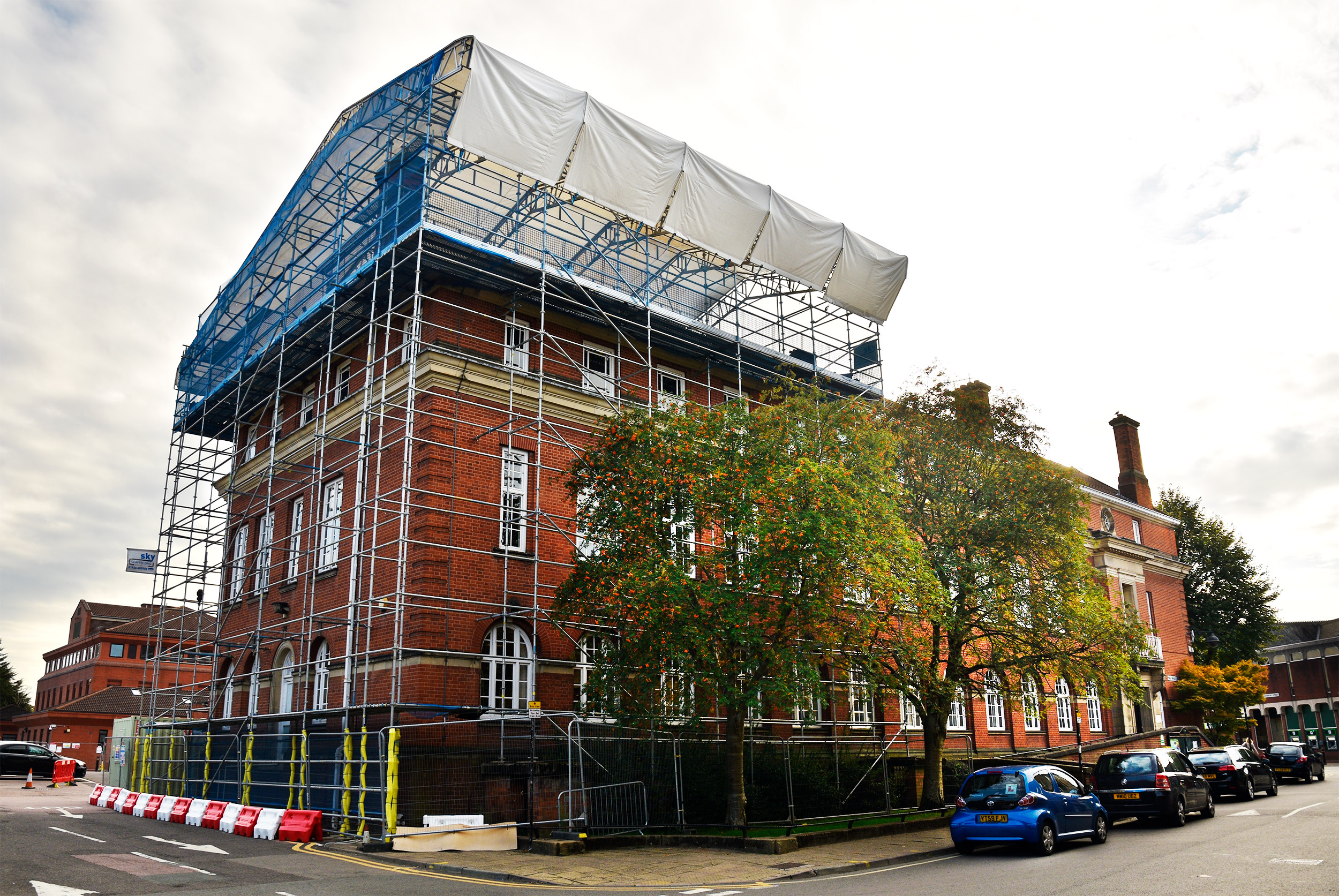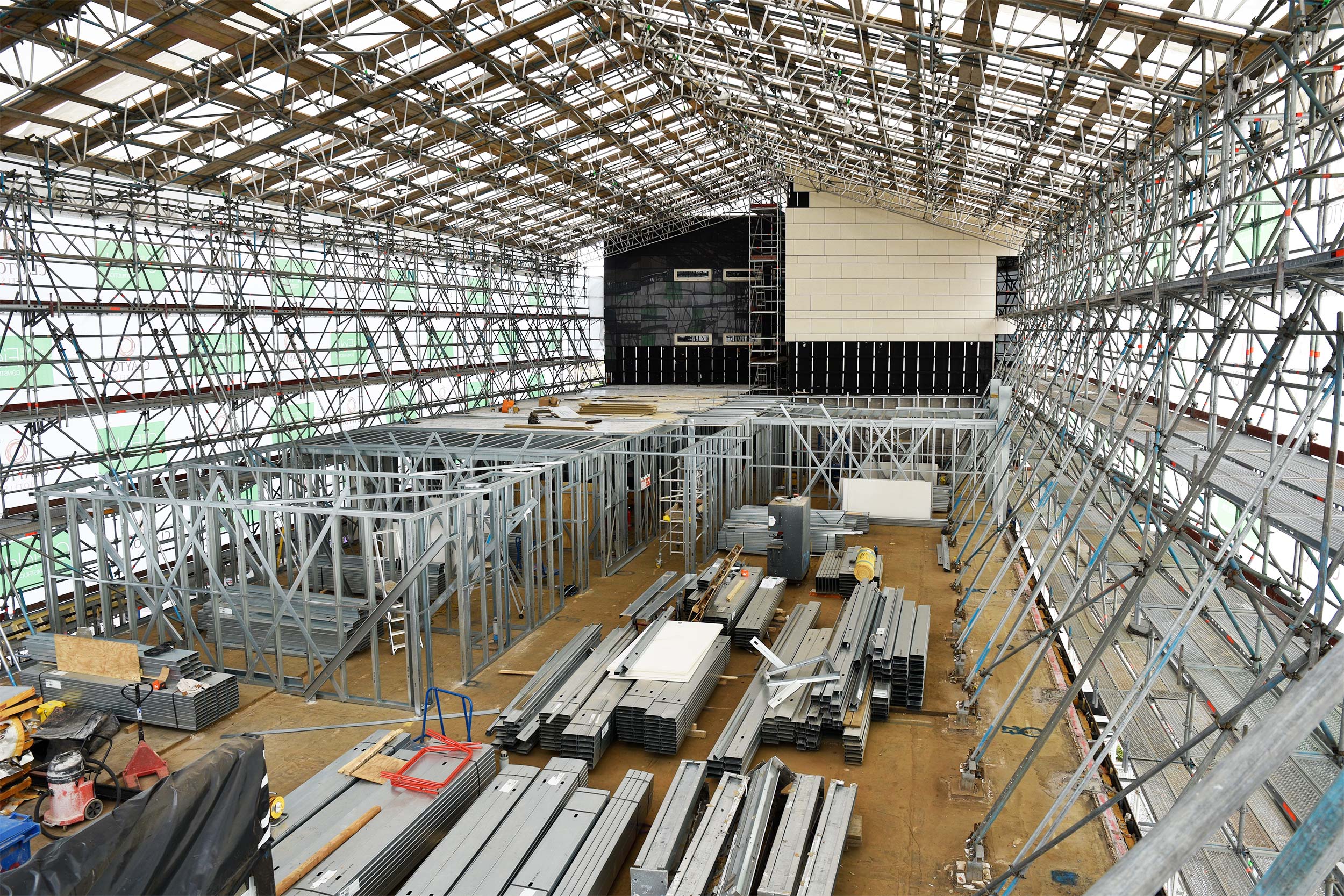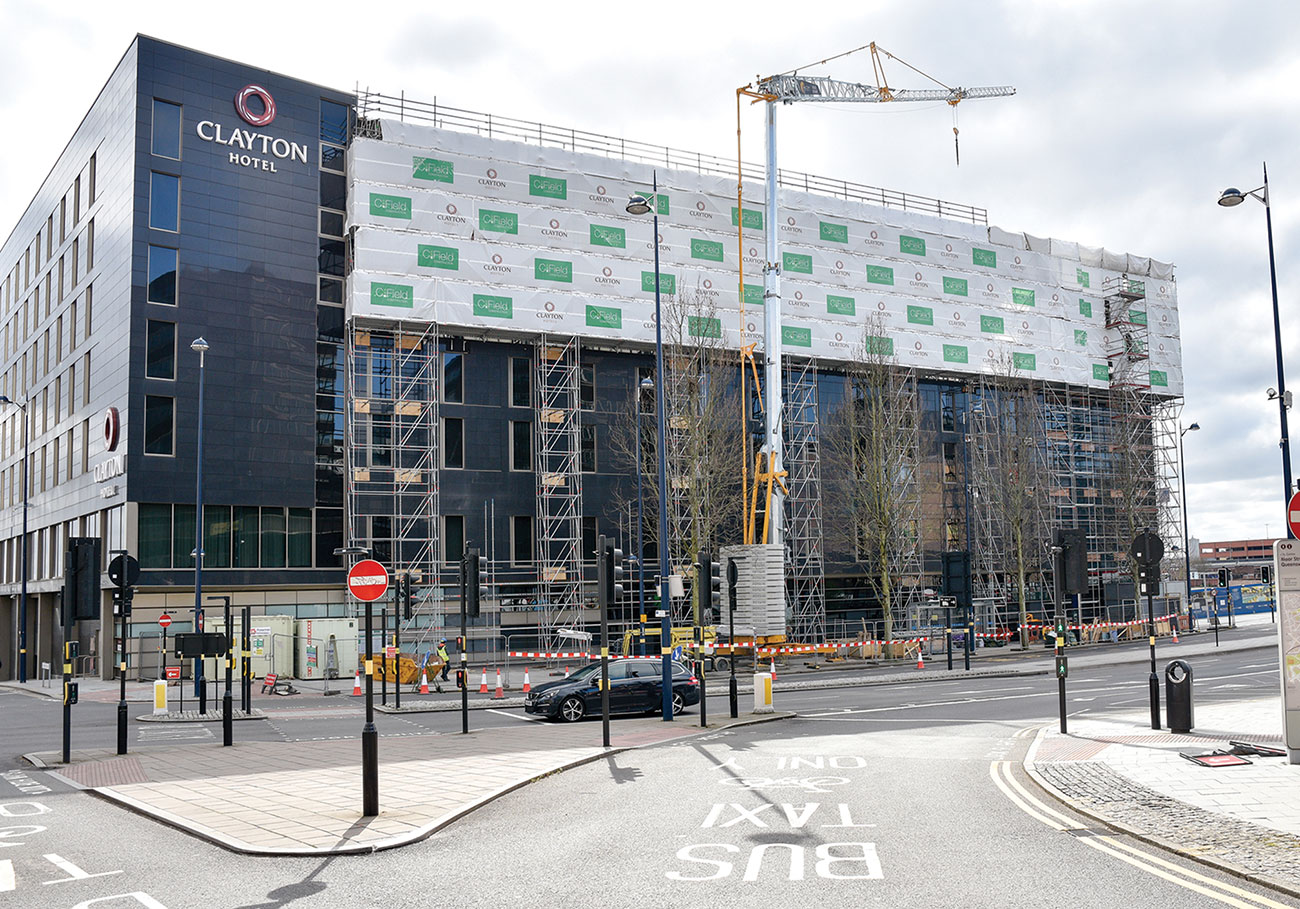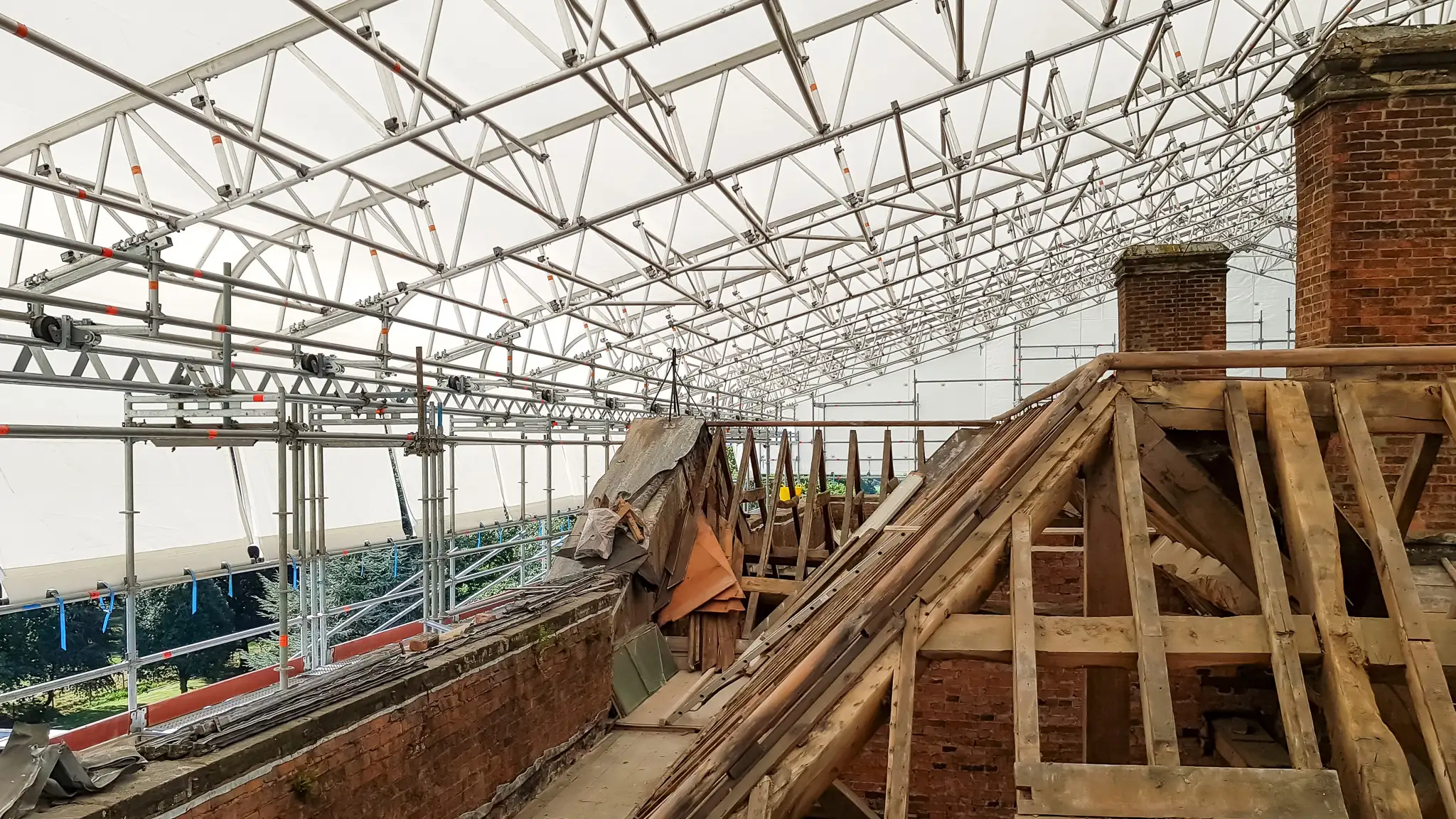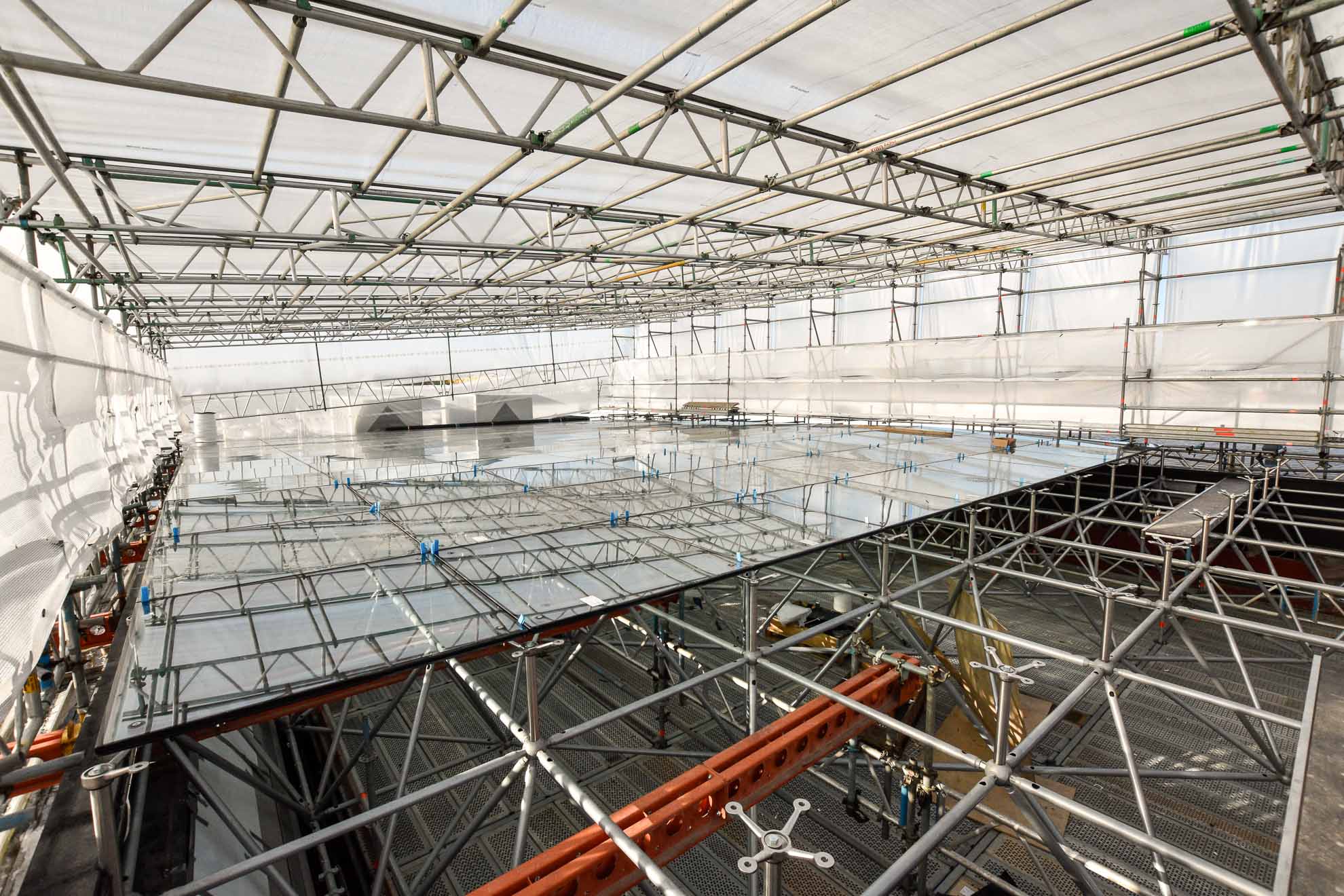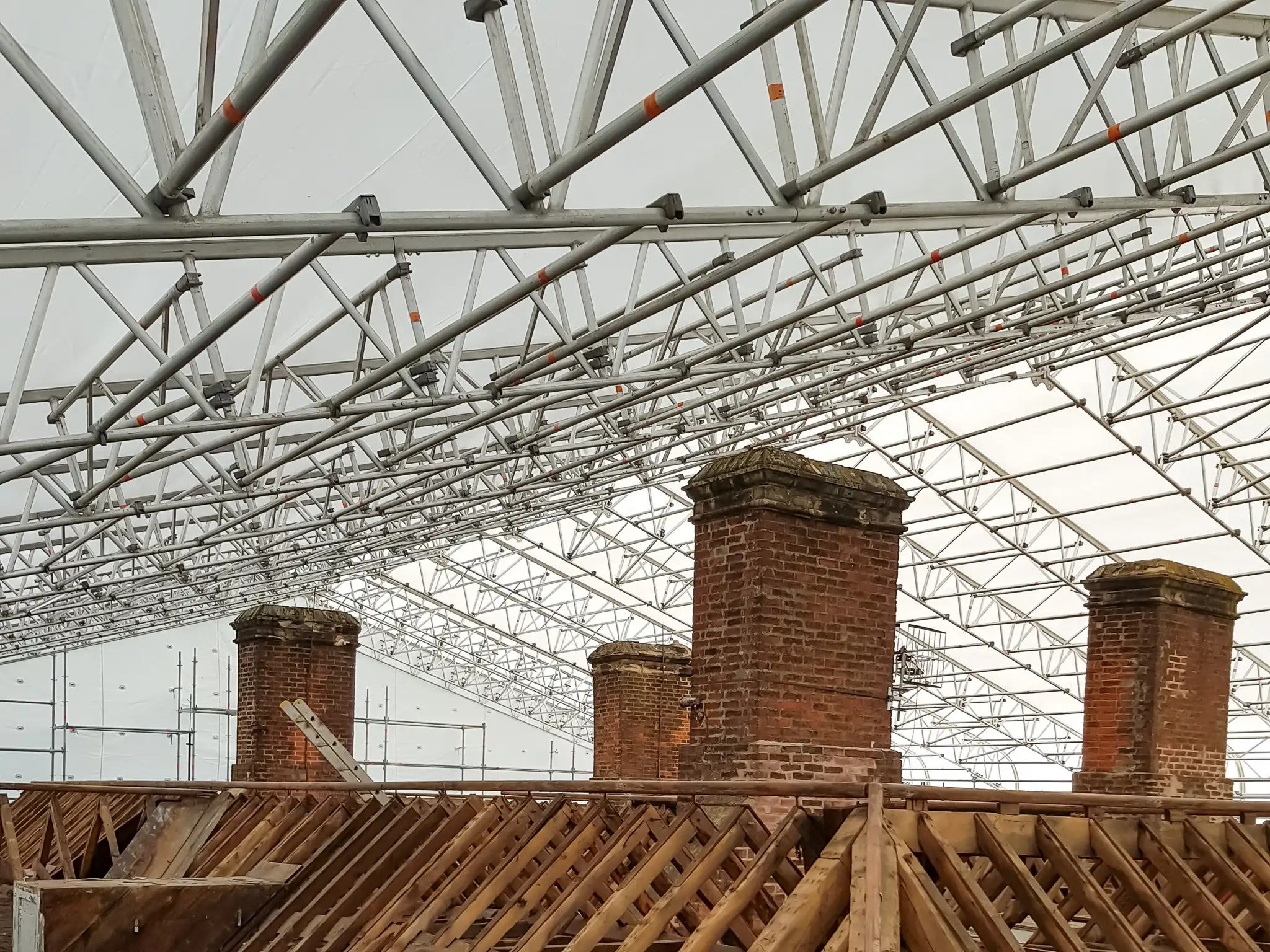Construction projects in the UK are constantly exposed to the unpredictable and harsh weather conditions. Temporary roofs provide an excellent solution to the vulnerability and potential damage caused by exposure to the elements, thus ensuring protection and minimising the potential for project delays. They provide year-round weather protection on large-scale renovation projects, and safeguard construction sites from weather conditions, dust, and environmental hazards.
Temporary roofs can be designed to cover spans of over 35m and can be assembled by hand or using a crane. There are also rolling roof options, this not only facilitates installation but also helps in minimising hire expenses for phased work.
With our skilled scaffolding professionals, we offer the essential protection needed to withstand extreme weather conditions, positioning us as a reliable provider of secure temporary roof systems. Additionally, we conduct regular maintenance evaluations to ensure the continued safety and effectiveness of your temporary roof.
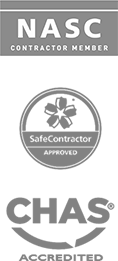
Temporary roof construction methods
Temporary roofs can be erected using three common methods: manual, roll-out, or crane. It is crucial to carefully plan the erection method based on the specific conditions of the site.
Specific design drawings with supporting calculations are necessary for all temporary roofs. It is important to account for the method of assembly, as different methods will impose different loads on the roof structure.
Manual installation ‘by hand’
Installing the roof structure manually is labour intensive and requires extensive work at height while straddling beams. Despite this, and in certain cases, it may be the only feasible option.
There are several reasons why manual installation might be necessary, such as restricted crane access, or limited space for construction on the ground. The shape of the building may also dictate the manual installation, as complex building shapes that cannot accommodate the roll-out method. The manual method is often preferred for smaller roofs since the expense of using a crane would outweigh the labor costs.
Mobile installation ‘roll-out’
By integrating extra components into the conventional roof setup, the roll-out installation method provides a secure and efficient way to construct roofs. This innovative approach eliminates the requirement for working at heights, as the roof can be safely assembled from the gable end scaffold.
The roll-out method is also useful if you need to provide regular opening and closing of the roof, for example to crane materials into the site.
Ground lift installation ‘by crane’
When it comes to larger roofs, using a crane for installation is the top choice as it cuts down on working at heights and facilitates safe and effective construction at ground level.
Rest assured that our expert team will thoroughly assess your construction site and choose the most appropriate installation method for your temporary roof.

Want to see examples of our Temporary Roof Scaffolding work?
We regularly update our website with examples of our work, to demonstate our knowledge and expertise, and to share the exciting projects we have had the pleasure of working on.
Go to Our Projects to find out more.
